---------------------------------------------------------
*** Just a reminder – I am not a veterinarian, just an animal owner & lover sharing my opinions and experiences. Any advice on caring for animals or diagnosing & treating medical conditions for animals is for informational purposes. Treatments should be evaluated by a trained veterinarian***
Chickens are pretty hardy birds. Feed them a quality layer feed, give them access to fresh water and a clean, dry place to sleep and they will stay pretty healthy. As a responsible animal owner it is always wise to be prepared; a fight between two birds, a predator attack, an unexpected illness; you want to be prepared for the worst. Following are some items to assemble for a chicken first aid kit. Stock up now and be prepared in case the need arises. Particularly in an emergency situation, you want to have the supplies handy. Have a sick chicken now? Check out my post on diagnosing illness with a chicken check up
Hospital Ward
The first thing you want to have handy is a place where you can isolate a sick or injured chicken. Isolating a sick chicken at the first sign of disease can save the rest of your flock from getting a sick. If you have an injured chicken often her flock mates will make the situation worse rather than offer her compassion. It can have a deadly end for the injured bird. A hospital coop can be a spare mini coop. (click here to see how I built one out of scrap wood). A large dog crate set up in your basement or garage can also work. Be sure to provide the sick or injured chicken with her own food and water.
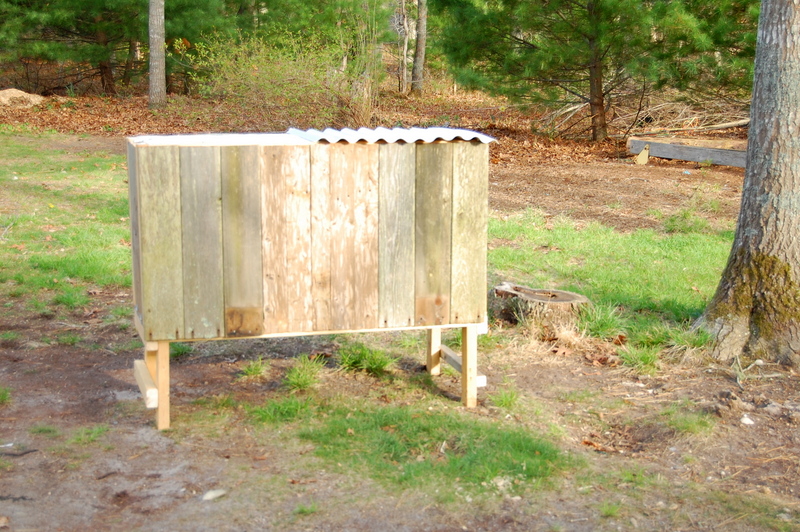
Disposable gloves
A predator attack can be a pretty ugly scene. Unfortunately, sometimes a predator will attack several birds. They will drag one off to eat and leave behind a trail of injured, bleeding birds in it’s wake. If you are squeamish, this is going to be hard enough to deal with on it’s own. Having gloves might make it a little more bearable. But most importantly, it will stop the transfer of germs between you & the chicken.
Vetericyn
An anti bacterial spray, Vetericyn is used to clean wounds and treat infections. Vetericyn is safe for almost all animals. It is a really handy product to have on hand for any animal owner. This is by far my most used item in the first aid kit.
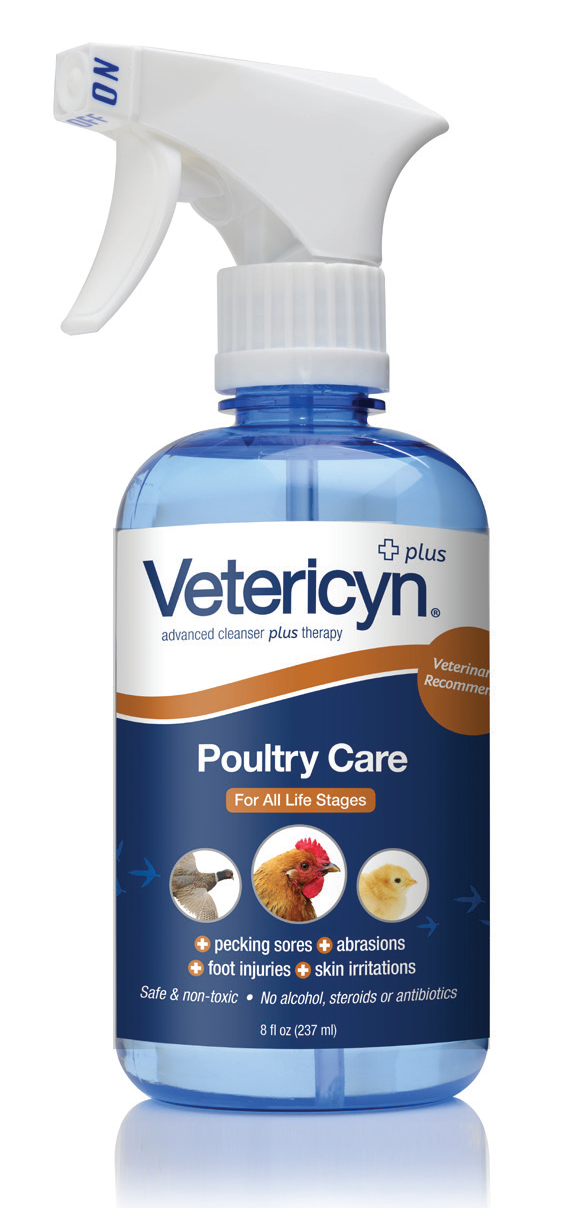
Vetrap Bandaging, Non Stick Gauze Pads, and small scissors
For treating injuries. Vetrap is a self adhering bandage used for animals. The great part is it sticks to itself, but not to fur & feathers. This prevents further damage when you need to remove it. Use the Vetrap to secure non-stick gauze pads in place. Another must have item for the kit.
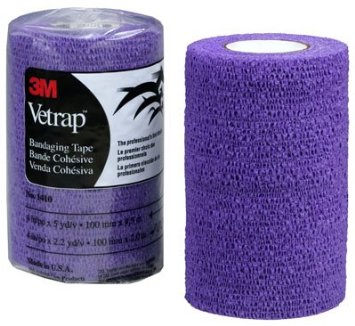
Rooster Booster Pick No More
This can help a bird with minor injuries stay with the flock, reducing stress on her. Birds are drawn to raw skin. If you have a chicken missing feathers from an injury or bully behavior, the other chickens will often pick at the area making it worse. Pick No More leaves a bad taste when other birds try to pick on her. This will discourage them from going after her
Syringe or dropper
Handy for administering medicine. But also, a syringe can be helpful if the chicken isn’t drinking or eating on their own. You can mix up a liquid diet to keep her strength up, using the syringe to feed her slowly.
Preparation H (regular without pain relief)
In the case of a prolapsed vent you will want to act quickly. A prolapsed vent is more likely to happen in young hens and often after passing a particularly large egg. When passing the egg, it will basically pull part of the oviduct inside out, pulling it out of the vent. Clean the area well (being very gentle) and apply Preparation H to reduce swelling. Once swelling has gone down you can gently push everything back in the vent. Spray the area with Vetericyn twice a day. Keep the hen separated for at least a couple days to monitor her.

Sterile Saline Solution
Saline Solution is great for washing out eye injuries or cleaning dirt from the eye area
Sav-A-Chick Electrolytes
Comes in handy packets, Sav-A-Chick can be a lifesaver for a chicken in distress. From a chick failing to thrive, to heat stroke, to the shock of predator attack, it’s great to mix into the water for any bird in the hospital ward to speed along healing.
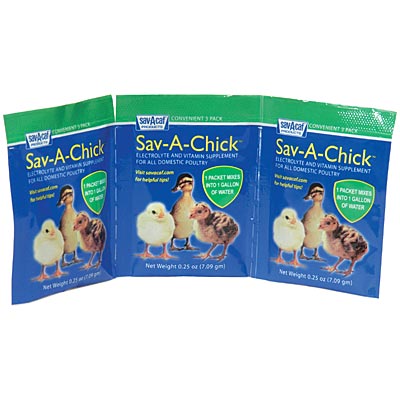
Pet nail scissors, nail file, super glue, thin fabric or paper
The birds will generally do a pretty good job keeping their nails & beaks trim. It’s unlikely you would ever have to trim them. It’s handy to have these items around for beak injuries (and less often for overgrown beaks). If your bird loses part of it’s beak, you will need the clippers or file to keep it from snagging on things. Sometimes the broken part will not fall off all the way and it can be repaired with super glue. Use a thin piece of paper (like a coffee filter or tea bag) or very thin fabric to “bridge” the two pieces together, held together with super glue.
Poultry Vet Rx
For treating respiratory problems (like excessive sneezing, wheezing or labored breathing). You can put a few drops of Vet Rx under the chicken’s wing or in their nostrils before bed. As they sleep the smell will help them like a menthol rub will help humans clear up congestion.
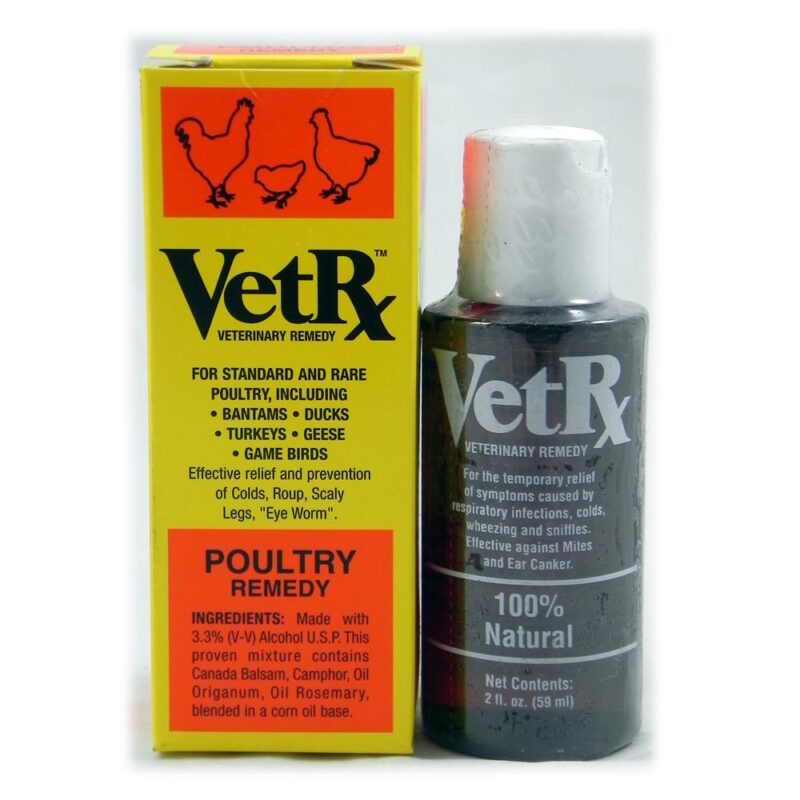
Vaseline
Helpful for treating scaly leg mites, egg binding, and many other things. This is something you definitely want to have around. It can also be used to prevent frostbite. It won’t treat it once they have frostbite damage, but a layer of Vaseline rubbed on combs & wattles forms a moisture resistant barrier to keep frostbite at bay.
Cornstarch
A handy item that most people already have on hand, cornstarch can help stop bleeding in small wounds. It is particularly helpful with bleeding nails, beaks, or pin feathers (which can bleed a surprising amount if broken).
Non Coated Aspirin
To help with pain management. Crush 4 regular strength, non coated aspirin into one gallon of water to help with pain.
Neosporin Antibiotic Ointment
Get the kind without added pain relief. The amount of numbing medicine is formulated for humans and is too much for chickens. This is good for treating wounds and bumblefoot infections. One of my readers reported that her chicken vet told her not to use generic brand antibiotic ointments because some have ingredients that are not good for birds – so stick to the brand name just to be safe.
Epsom Salt
For a foot soak with bumblefoot infections, or a soaking chicken bath in the case of egg binding or to cleanse vent gleet . Can help internally with an impacted crop, and can flush the digestive system if they have diarrhea (dissolve about a tsp Epsom salt in warm water and use a syringe to feed to chicken).
Phone number for a veterinarian who will see poultry
It is vital that you do this research ahead of time so in the event of an emergency you aren’t searching for help. Many veterinarians are trained to treat common pets – cats, dogs, possibly rabbits – and won’t treat poultry. Traveling farm vets are a good resource but can be hard to find if you live in the city or suburbs. Vets who treat “exotic” pets often will have some training with poultry or at the very least will be willing to see you. You may never need to take your chickens to a veterinarian but in case you need to, you will be happy that you know who to call.
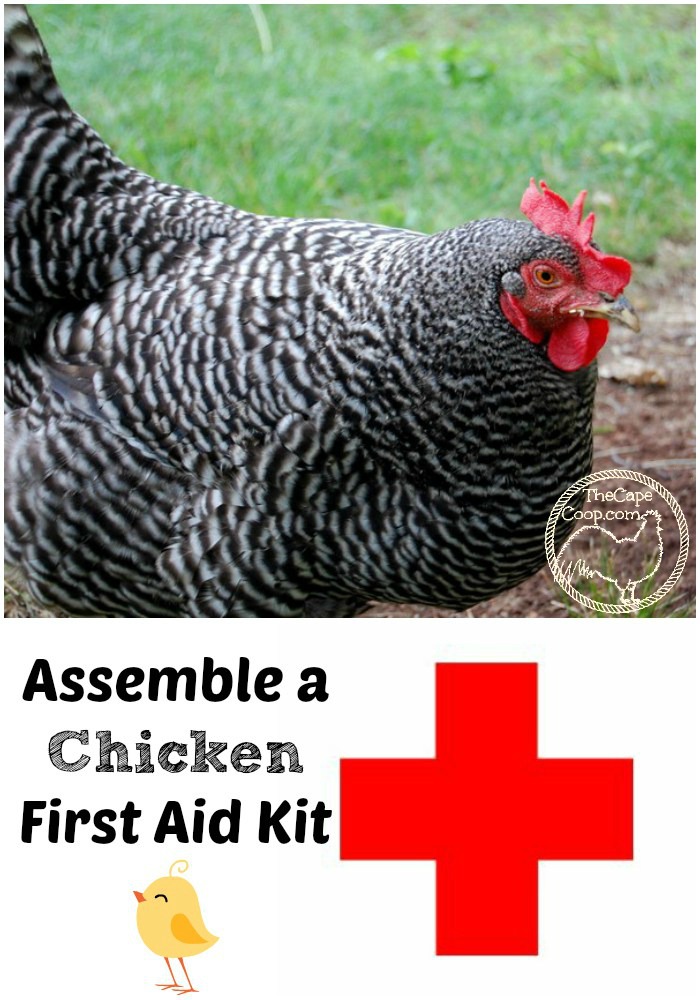

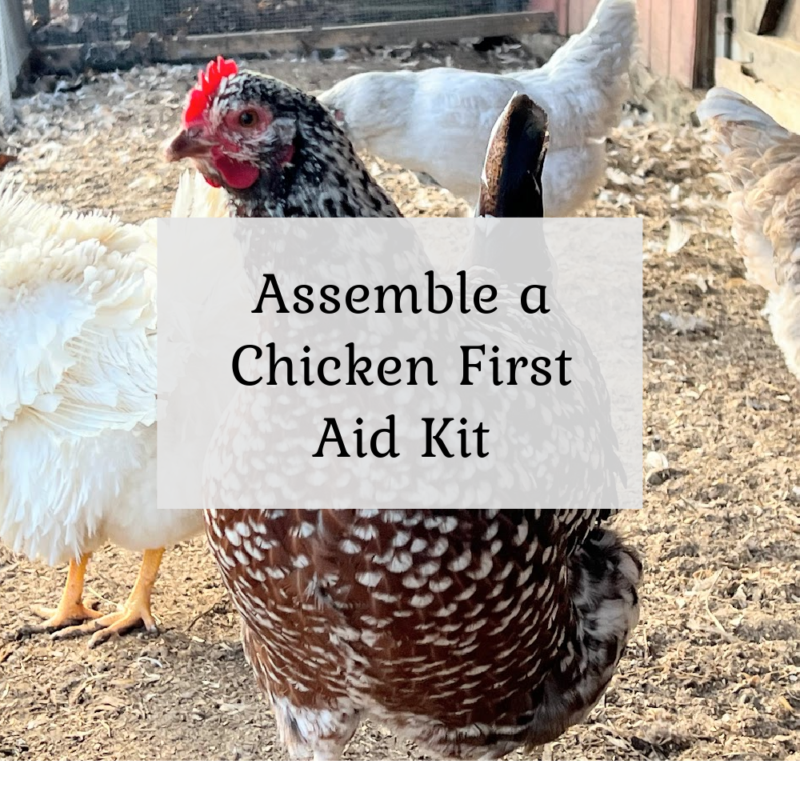

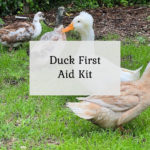


Kerry
Friday 14th of August 2020
Perfect thank you!
Kerry
Thursday 13th of August 2020
Hi!
My duck has a small crack on one of her blood feathers. It has a tiny spot of blood around it. Do I just keep an eye on it to make sure it doesn’t get worse or dose it need to be removed? Her feathers are currently growing in now, will that feather continue to grow still? Is there anything I can do to help with the small crack?
Thank you!
Liz
Thursday 13th of August 2020
If there is just a tiny spot of blood, I would just keep an eye on it. If it was only slightly damaged, it will likely continue to grow. You can apply some cornstarch or styptic powder along the crack just to try and clot it up more.
Crystal Bogdan
Tuesday 19th of May 2020
Blu-kote should not be used on chickens or other livestock. It is not approved for use in food-production animals, and therefore would cause lifetime withdrawal for eggs and meat and would make it illegal to sell them. It also burns and is not meant for open wounds. Just because it works doesn't make it acceptable. There are several other options...Hen Healer, Pick-no-more, and DIY blue anti-picking spray made with food-coloring and iodine, betadine, Vetericyn, or even water. If you read the label on your Blu-Kote it should even tell you it's not for use in food-producing animals...just f.y.i.
Liz
Tuesday 19th of May 2020
Thank you Crystal. I wrote this article several years ago based on what I had in my chicken first aid kit at the time. I had bought the Blu-kote on the advice of a long time chicken keeper I trusted when I first got my flock (and thankfully never had to use). A year or so later I came across some information on Blu-Kote and chickens, did more research and decided to toss it from my kit. There are no studies done on chickens and what the proper withdrawal time should be as it is not manufactured for use with chickens so to be safe, it's probably best to not use it. I have since replaced the Blu-Kote with Rooster Booster Pick No More (which also thankfully I've not had to use). Thank you for the reminder to update my post, I didn't even realize it was on there!
Cris
Wednesday 27th of March 2019
The meds to get rid of mites. How long is the withdrawal time on eggs? I have read alot of sites and all are different. I have found no withdrawal time to 45 days. Do u know?
Liz
Thursday 28th of March 2019
Ivomec Eprinex use in chickens is "off label" - meaning it is not manufactured for use in chickens, it is for cattle. Because of this, the manufacturer doesn't put out any guidelines on withdrawal time in chickens. They do advertise that there is zero withdrawal time in cattle for milk or meat which is why many people feel safe with no withdrawal. But with no official guidelines from testing this is why you are finding varying answers. To be on the safe side, I toss the eggs for a week after treating.
Karen jobes
Sunday 21st of May 2017
I have a hen that is making horse sounds and has dirreah., she is lethargic and just wants to stand alone, she is eTing and drinking. Now one of my other hens is sneezing and dirreah. Any suggestions., I put epsom salt in their water and keep the coup clean and dry
Liz
Tuesday 23rd of May 2017
when was the last time she was wormed? It's hard to say, but gape worm is a worm that can infect the tracheas in chickens. They can cause them to cough and make a lot of throat clearing noises and the chicken is trying to dislodge it. Gapeworms are red and visible to the human eye, sometimes you can see them if you examine down your chicken's throat, but sometimes they are too far down. Chickens with gape worm would also be shaking their heads and sometimes look like they are gagging. My other guess would be a respiratory infection (like a cold), you could try putting some vet rx under her wings to breath in and giving her electrolytes. Either way, both are contagious so I would definitely recommend separating any ill birds from the rest of your flock until you figure out what is going on